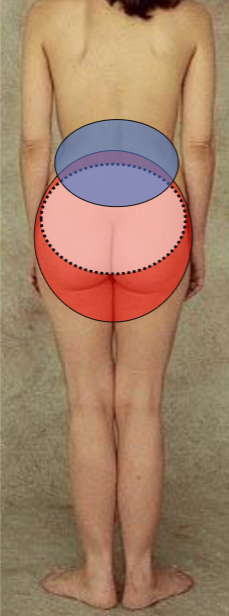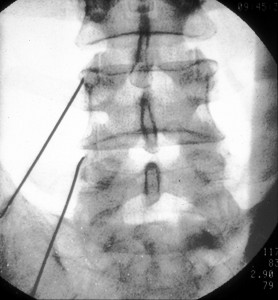Dr. From Córdoba
Interventional units aim to relieve pain using minimally invasive techniques.
INFILTRATIONS
There are many diseases that can cause inflammation of the nerves and discs of the lumbar spine. The most common are disc herniation and the reduction of the internal diameter of the vertebrae (canal stenosis); these cases respond very well to the direct injection of a cortisone-type anti-inflammatory into the spine.
The infiltration involves inserting a needle between the vertebrae to detect the space surrounding the discs and nerves. An advanced X-ray machine (digital radioscopy) is used to guide the fine needle to the inflamed area. Before putting the medication in, a contrast is injected that draws the epidural space on the screen and confirms that everything is being done correctly.
Thanks to these techniques, many patients have avoided undergoing a larger, more risky surgical intervention with a longer recovery period.
RHIZOLISIS
 Back pain is very common; it is known that 80% of humans will have a pinch (lumbago) throughout their life. For many of these patients, the pain comes from the small joints that thread the vertebrae together. These vertebral “hinges” hurt when they are inflamed or degenerated.
Back pain is very common; it is known that 80% of humans will have a pinch (lumbago) throughout their life. For many of these patients, the pain comes from the small joints that thread the vertebrae together. These vertebral “hinges” hurt when they are inflamed or degenerated.
Pain arising from these joints can be cured by applying a high-speed electric current (RADIO FREQUENCY) to the delicate nerves that transmit joint sensitivity. In this operation, popularly called rhizolysis, no drug is infiltrated but the nerves are thermocoagulated using special needles; at the end of outpatient surgery, patients return home on their own.
“AUSTRALIAN” RISOLISIS
 Australian researchers from the University of NEWCASTLE have developed in the last decade a rhizolysis that far surpasses that used in Europe. This refinement has been shown to be much more effective and long-lasting than the classic technique. For this reason, in our Unit today we only practice the Newcastle technique.
Australian researchers from the University of NEWCASTLE have developed in the last decade a rhizolysis that far surpasses that used in Europe. This refinement has been shown to be much more effective and long-lasting than the classic technique. For this reason, in our Unit today we only practice the Newcastle technique.
